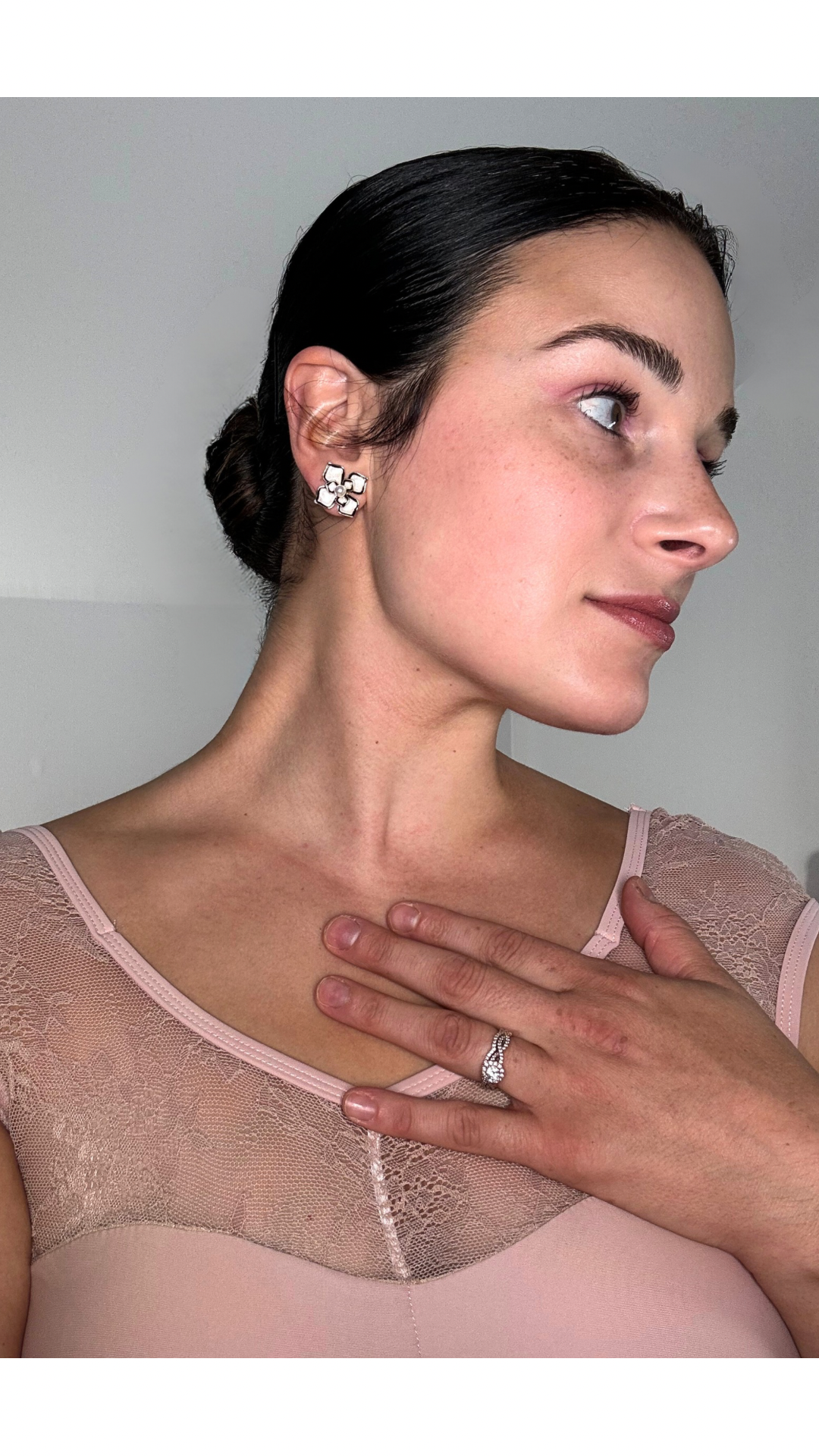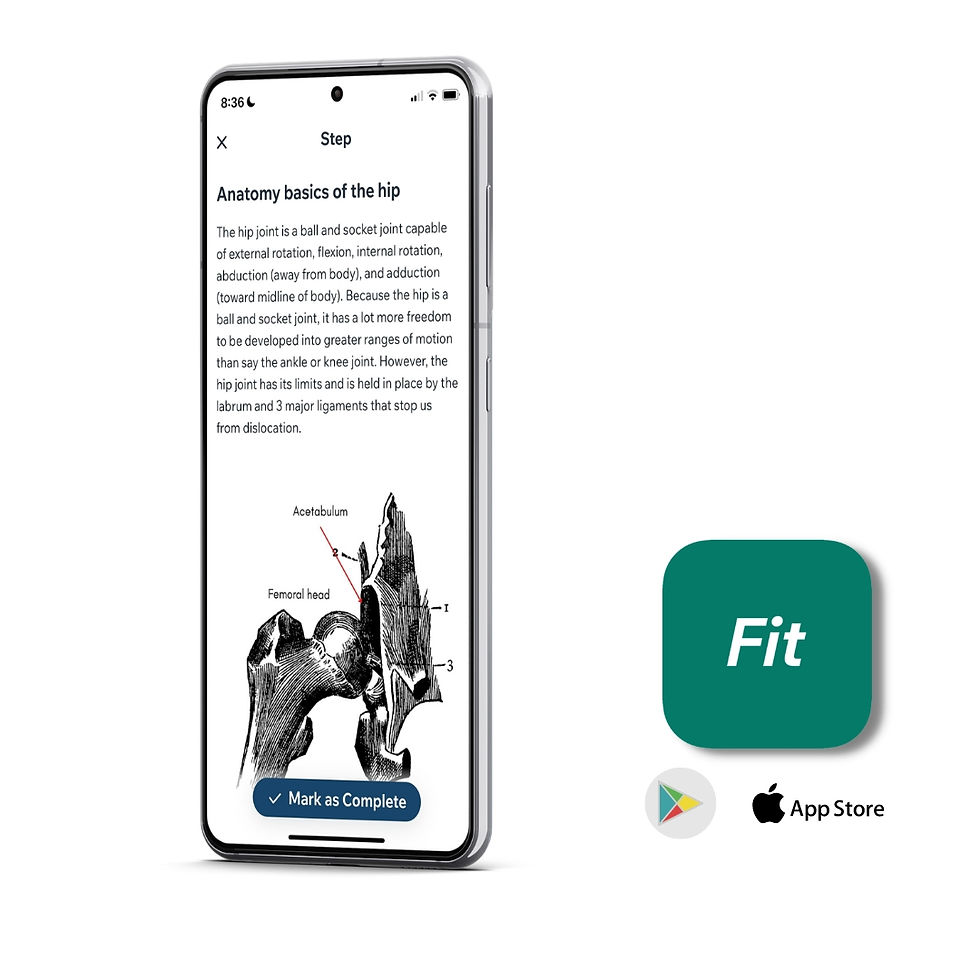Get better results with PNF stretching for dancers...
- Veronica K

- Apr 25, 2023
- 5 min read
Updated: Apr 27, 2023

Have you ever heard of PNF or contract relax stretching? Chances are you might have done it class but, never really understood why or how it's helping you progress with mobility.
I'm about to help you understand:
What it is
How to do it
Why it may benefit your dance body
Not only does static stretching take a long time to be effective but, sometimes it's downright uncomfortable! PNF stretching can help improve the comfort level of the stretch and help you gain range of motion faster than static stretches.
PNF (proprioceptive neuromuscular facilitation) is an advanced form of flexibility and mobility training that can be highly beneficial to dancers and athletes. Other names you might have heard PNF being called include: active inhibition stretching, active stretching, or facilitated stretching 1. It works by inhibiting or facilitating muscle activation to increase the chances of that muscle being lengthened 1. For example; if the hamstrings are tight, we try to inhibit tension in the muscle. For facilitation techniques with tight hamstrings we may try to activate the hip flexors and opposing muscle groups to gain more range of motion.
When a dancer uses PNF techniques, it may help relax muscle tension reflexively to the stretch during or prior to the stretch being applied 1.
But, before we dive into the how and different types of PNF stretching, let's discuss some reasons you might not want to perform this on your body.
Contraindications for this type of stretching would include (Cited from Therapeutic Exercise 1):
Bony block that limits motion
Recent fracture
Acute inflammation (you just got injured and there's inflammation present)
Sharp pain
Hyper mobility already exists in the joint you're thinking of stretching
In this article, I will discuss 3 different types of PNF stretching most commonly used 1.
Hold relax or contract relax
Agonist contraction
Hold relax with agonist contraction
Hold relax/contract relax:
So, let's use the hamstrings as an example to understand this type of stretch. First we take the hamstrings and move them passively to their end range of motion. End range is where you feel the tension of the muscle but, the dancer is still able to maintain anatomical alignment and not elevate the pelvis or contort the body to make it look like they are going farther. This can be achieved by using a partner or a stretch strap but, you are NOT actively contracting your muscles to lengthen the hamstring at this point.
So breaking it down into digestible steps:
Find end range where tissues feel tight with proper form still
Bring the limb about 15 degrees less than end range
Push against your partner or the resistance band for about 5 seconds with 30% muscle force isometrically (not moving- contracting in place).
Relax the muscles and passively use the stretch strap to bring the limb further
Repeat this cycle up to 3-4x until you reach the new end range or you begin to compensate
Agonist Contraction Stretch:
Let's start by defining what agonist means in terms of muscles. An agonist muscle is the one that is OPPOSITE the muscle that you're trying to gain more range of motion. So, if my hamstrings are tight then my agonist muscle would be the hip flexors. The antagonist muscle refers to the muscle that is range limited 1.
To perform this stretching technique follow these steps 1:
Dancer contracts the muscle opposite the tight muscle and holds this end range for several seconds - this must be controlled by the dancer not with strap/partner. So, if you're trying to gain length in the hamstrings, you must contract the hip flexors and hold that contraction at end range with proper form. Do NOT bounce contract the limb.
The dancer then takes a brief rest
Then, repeats the contraction cycle with the hold (again do not bounce)
Indications and benefits of dancers using the agonist contraction stretch:
Great for dancers with significant muscle guarding when they go to static stretch
Helps dancers who contract with wrong muscles re-educate proper muscle groups while lengthening tight ones
Is a form of dynamic stretching and MAY be done before class in moderation (without reaching muscular failure)
May be helpful to perform this stretch then follow with a regular static stretch for more comfort and improved range of motion after class
Hold-relax with Agonist contraction:
This one is my personal favorite and I instruct dancers on this quite often in private training lessons. In short, this stretching method combines the first hold relax and agonist contract together to create maximal stretching length while re-educating muscle fibers.
Steps to performing this method 1:
Move the limb to end range where resistance is felt in the muscle but, technique is held (referring to the tight muscle- antagonist). Use a stretch strap or partner.
Dancer then presses into resistance isometrically for 5 seconds followed by a relax in the muscle for 5 seconds
After 5 second relaxation, dancer immediately performs a contraction of the agonist muscle (muscle opposite tight one) and holds for 5-10 seconds per tolerance.
Going back to the first hamstrings example let's talk about what exactly is happening here:
I'm lying on my back, leg goes up straight and I'm holding it with my stretch strap.
I find my end range and mentally take note
I push down against the stretch strap and hold for 5 seconds
I relax my muscles for 5 seconds
I immediately contract my hip flexors while keeping my form and hold that for 5-10 seconds as long as it does not cause me pain.
Repeat this cycle up to 5x on each leg and perform these AFTER class
Why do I like hold relax with agonist contraction the most?
When I worked in therapy clinics, I found leaps and bounds difference in range of motion improvements with patients than just performing passive stretching. Even statistically, PNF stretches have been proven to yield better results than regular static stretching 2.
Specifically, in regards to dancers I think the HR with agonist contraction is most effective because let's say the dancer is struggling with battement front. Instead of just having them stretch all day without addressing the issue the hip flexors may not be recruiting proper activation, this stretch technique addresses both ends of the spectrum.
It will help the dancer gain range of motion and length of muscle fibers but, it is also telling if that dancer is additionally lacking strength in the opposing muscle group which could limit their progress. If the dancer has significant challenges with the agonist contraction, it's indicated to then work on opposing muscle strengthening to help further lengthen the fibers of the shortened/tight muscle group.
Overall, mobility and range of motion is incredibly important for successful and healthy dance technique. Learning to stretch in multiple different ways is always the best advice I give any dancer. Unfortunately, there's never just ONE simply solution that covers every human's body. Some may find these techniques beneficial and see significant progress while others will stick with the static stretches. Just know that I'm not here to flip your world upside down, I'm here to educate and offer another possible solution to your problem.

Make sure to check out my YouTube video below for my instructions on turnout stretching to improve your turnout with PNF stretches.
For more mobility & strength help with you dance training, check out my on demand programs available anytime here.
References:
1
Kisner, C. and Colby, L.A. (no date) “Stretching for impaired mobility ,” in Therapeutic exercise foundations and techniques . 6th ed. FA Davis Company , pp. 74–76.
2
Etnyre, BR, and Abraham, LD: Gains in range of ankle dorsiflexion using three popular stretching techniques. Am J Phys Med 65: 189-196, 1986.




Comments